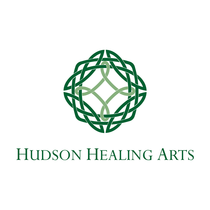|
The power of guided imagery is fairly intuitive to all of us. Whether it’s a serene mountaintop or a childhood beach house, most have experienced the instantaneous relaxation that comes from going to our “happy place,” even if not consciously.
When you do proactively harness the positive feelings that guided imagery evokes, there’s a wonderful opportunity to deliver healing and motivating messages deep inside your subconscious. At Hudson Healing Arts, we offer guided imagery as a tool for deep relaxation, stress relief, enhanced creativity and imagination, improved wellbeing, and beyond. What Exactly Is Guided Imagery? Guided imagery can be thought of as “directed, deliberate daydreaming.” For practitioner Beth O’Boyle, it was natural to add guided imagery to her repertoire after training in hypnosis. Guided imagery is a form of both hypnosis and meditation, in a way, because it involves entering a naturally immersive altered state, though there are a few key differences. During a guided imagery session, you’re in a purely receptive, listening state (aka, the practitioner is doing all the talking), whereas hypnosis can involve more two-way interaction. Hypnosis also tends to be goal-oriented - quitting an undesirable habit, for instance. Guided imagery, although frequently focused on stress relief or relaxation, can also be directed towards a achieving a goal, such as transforming a body-centered issue or helping to support the body’s healing resources. “Our thoughts are incredibly powerful, but it’s easy for our minds to get filled with unimportant or negative thoughts. Doing deliberate work on what you fill your mind with can have a tremendous ripple effect on all areas of your life,” Beth shared. Beth talks to clients beforehand for a sense of what they want to work on, even if it’s very general. In sessions, she uses specific words or thoughts to evoke or connect into the subconscious, tapping into the power of sensory experiences. Benefits range from feeling a deeper sense of peace, reviving that spark of childhood imagination, creativity, and playfulness that often gets lost in adulthood, to supporting or strengthening inner health and wellness. The positive impacts have been demonstrated by research as well, showing that guided imagery has the ability to lower anxiety and pain, speed up healing, reduce blood pressure, increase athletic mastery, and boost confidence. It’s also a wonderful complementary treatment for those living with chronic illness. The practice can even heighten our responsiveness to our own intuition and empathy. Using Guided Imagery At Home If you feel you’re “just not a visual person,” you’re in luck: guided imagery involves all the senses and is actually experienced through the body, not just in your mind’s eye. Concentrate on the senses. you associate most with--do you tend to recall the way things look, feel, sound, smell, or taste? We all have a different way of experiencing the world around us - there’s no right or wrong. Play to your strengths. Do a little homework beforehand and have a cheat sheet ready with three ‘happy places,’ so that you’re ready when a stressful situation arises. Think about relaxing environments that bring you peace-- whether it’s the beach, mountains, sitting in your garden, or maybe even being surrounded by puppies! Then, find a quiet, uninterrupted place to sit comfortably (no tight or restrictive clothing) with your eyes closed. Transport yourself mentally by vividly evoking all the senses: the feel of sand squishing beneath your feet, the sound of the seagulls, the sun warming your face and shoulders, the mist of the ocean spraying your face. Colors are an important aspect of guided imagery, too. Here again, we all have our own uniques sense of what feels good to us. In general, f you need energy and enthusiasm, conjure up bright red, yellow, and orange hues. Those seeking relaxation should opt for soothing blues and greens, colors reminiscent of nature and the ocean. The beauty of guided imagery is that it’s also fantastic for children. With summer wrapping up, there’s a refreshing “blank slate” feeling in the air - and it’s a wonderful time to introduce guided imagery to your kids to set a confident, excited tone for the school year. This is actually much easier for children than for adults, because they’re naturally more present to that world of fertile imagination. They don’t need a lot of prompting to go into a relaxed, receptive state, either, easily getting there quite quickly. Beth suggests that parents anticipate where there might be challenges for their children (for instance, starting school or transitioning from elementary to middle school) and set the tone of walking into a welcoming environment. She emphasizes the importance of evoking the senses: tap into what’s heard, sensed, smelled, tasted, and set that up in an imaginary way that’s pleasant and comfortable. Because kids are so receptive to stories, bedtime stories are the perfect opportunity for an impromptu guided imagery session. Keep it short and be mindful of the language you use, gently reinforcing experiences in a positive way. Conclusion As safe and gentle as it is, guided imagery is a remarkably powerful tool with a wide variety of benefits. Guided imagery helps you to relax, connect with your inner resources, and take care of your most valuable asset: your wellbeing. You can see for yourself by taking advantage of this month’s special deal at Hudson Healing Arts: From August 6 through September 15, receive a 20% discount on guided imagery sessions. Use code “imagine20” when scheduling your session to receive your discount.
0 Comments
|
AuthorHannah Chenoweth is a Hoboken-based conference producer and freelance writer who enjoys covering all aspects of health and wellness. Archives
July 2024
Categories
Acupuncture
Aromatherapy AshWork Energy Clearing Bach Flower Remedies Guided Imagery Hypnosis Counseling Nutrition Practitioners Psychotherapy Reiki Shamanism Sound Healing Wellness Spring Summer Autumn Winter |

 RSS Feed
RSS Feed